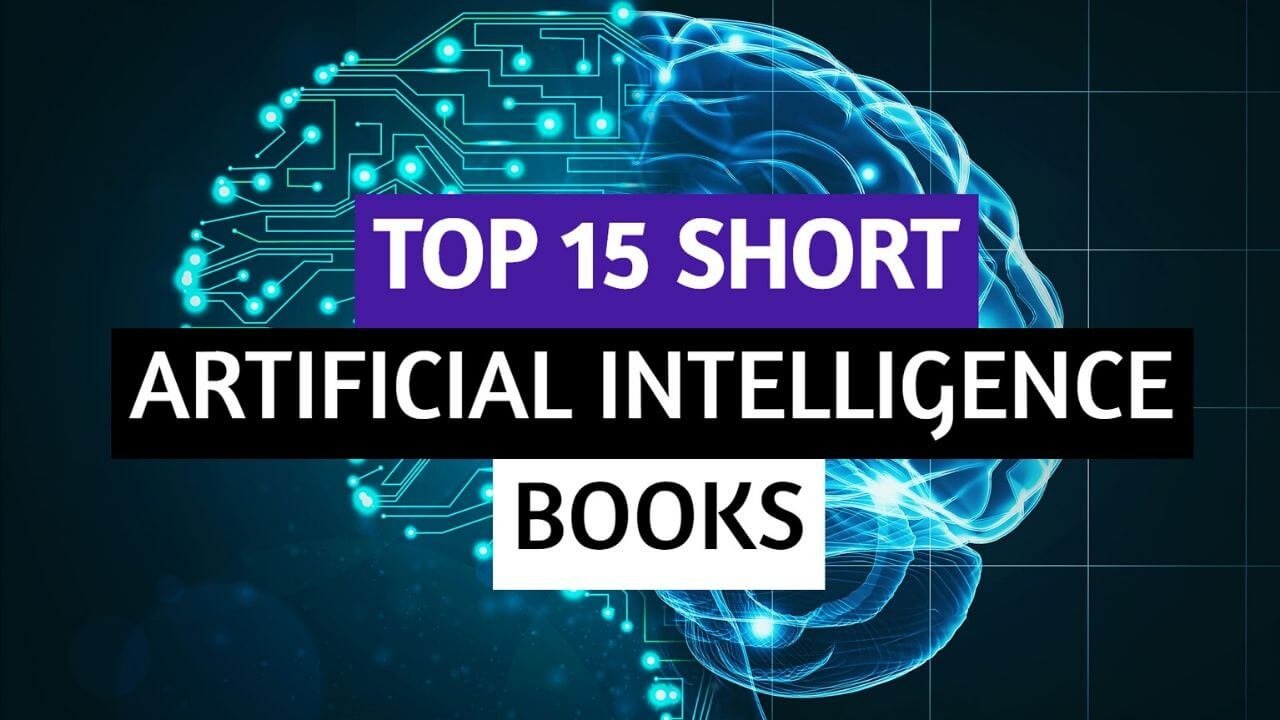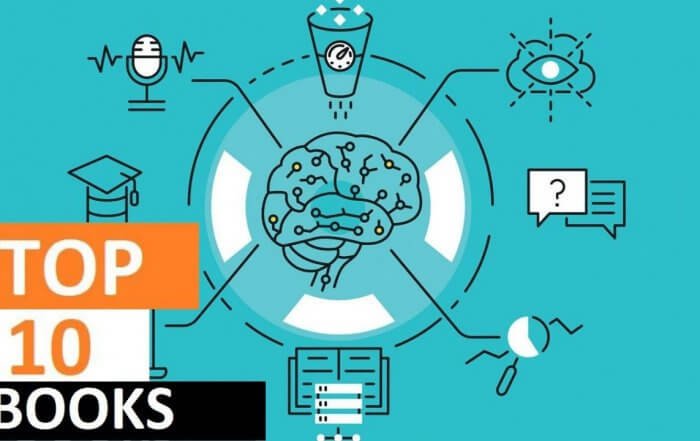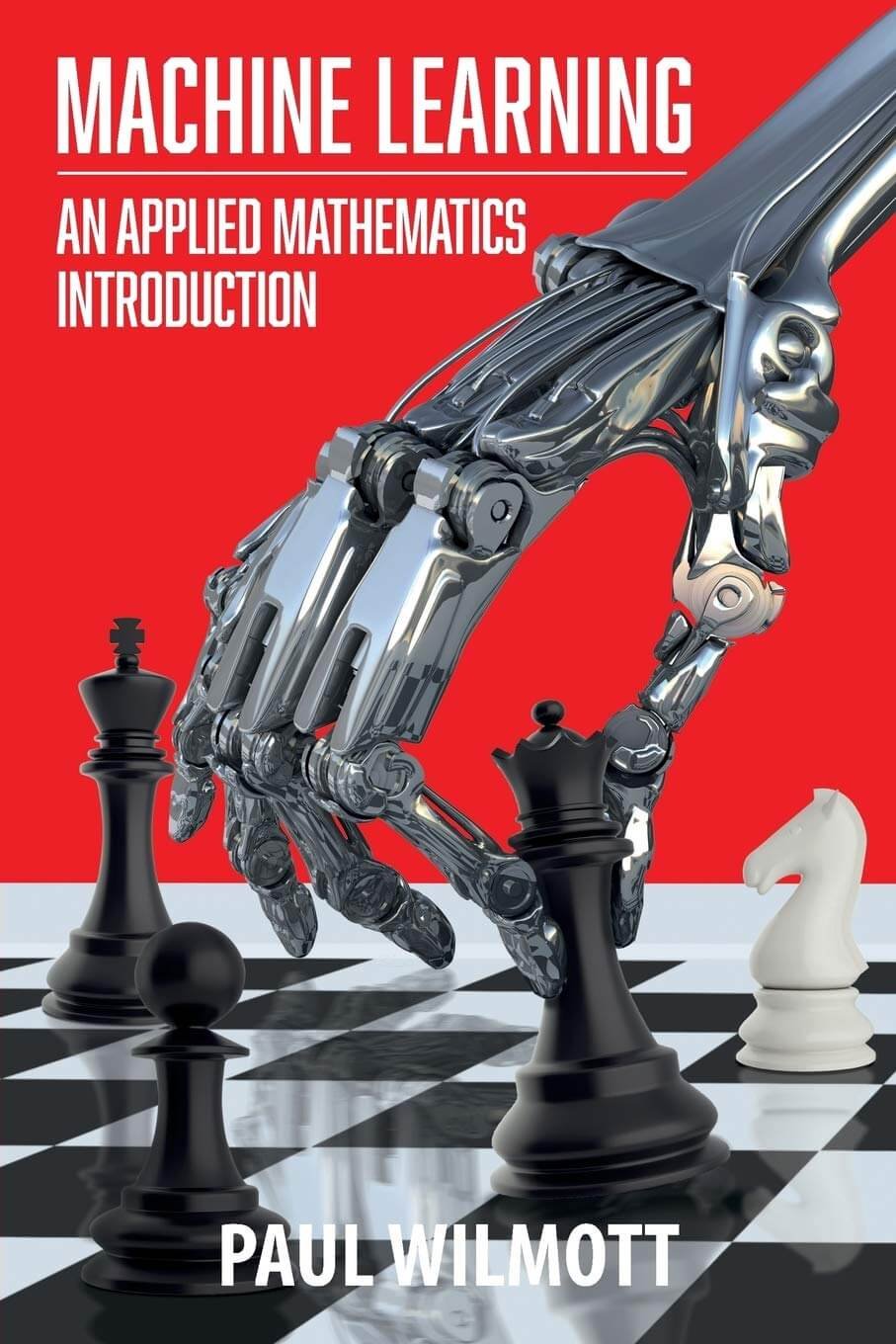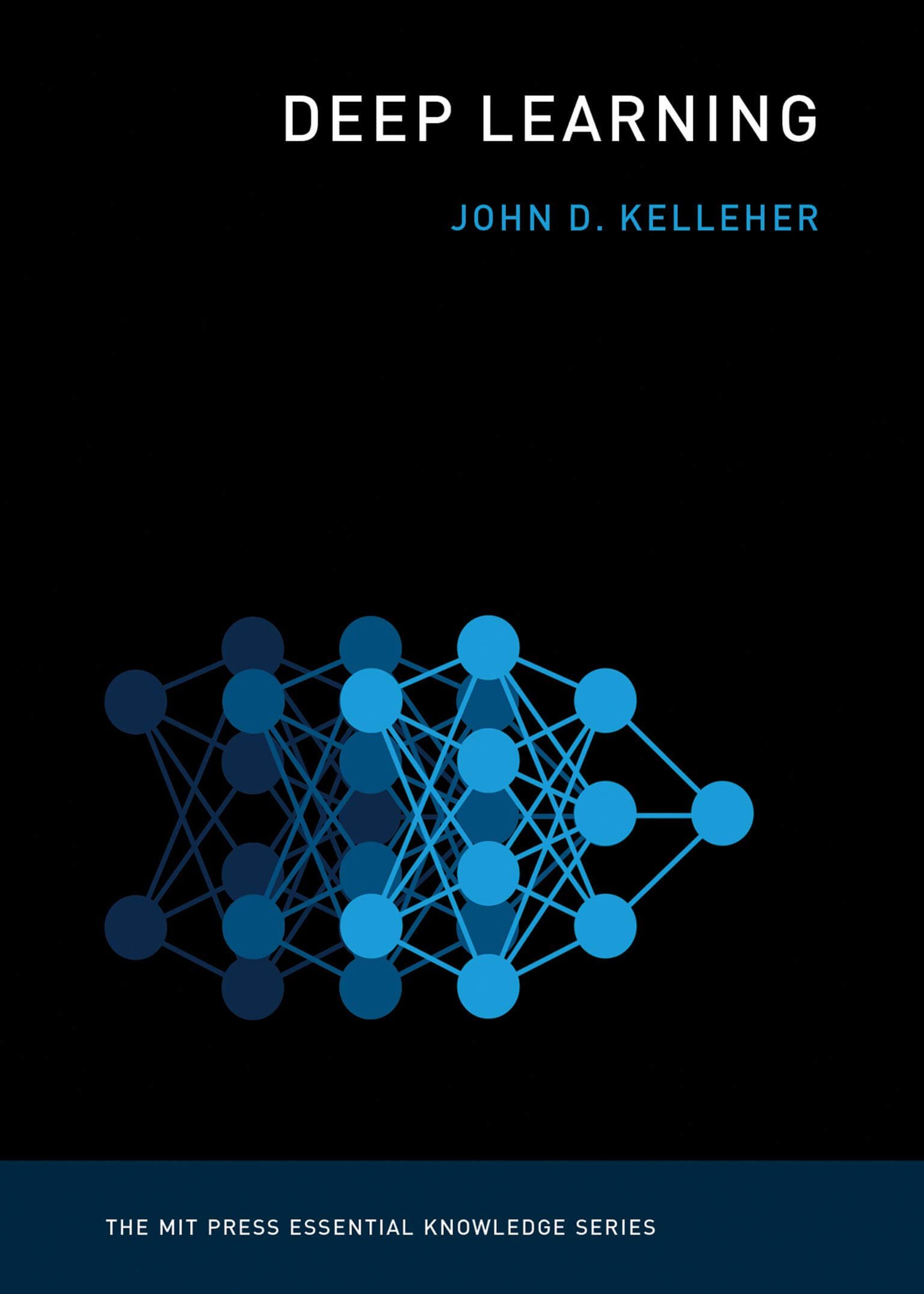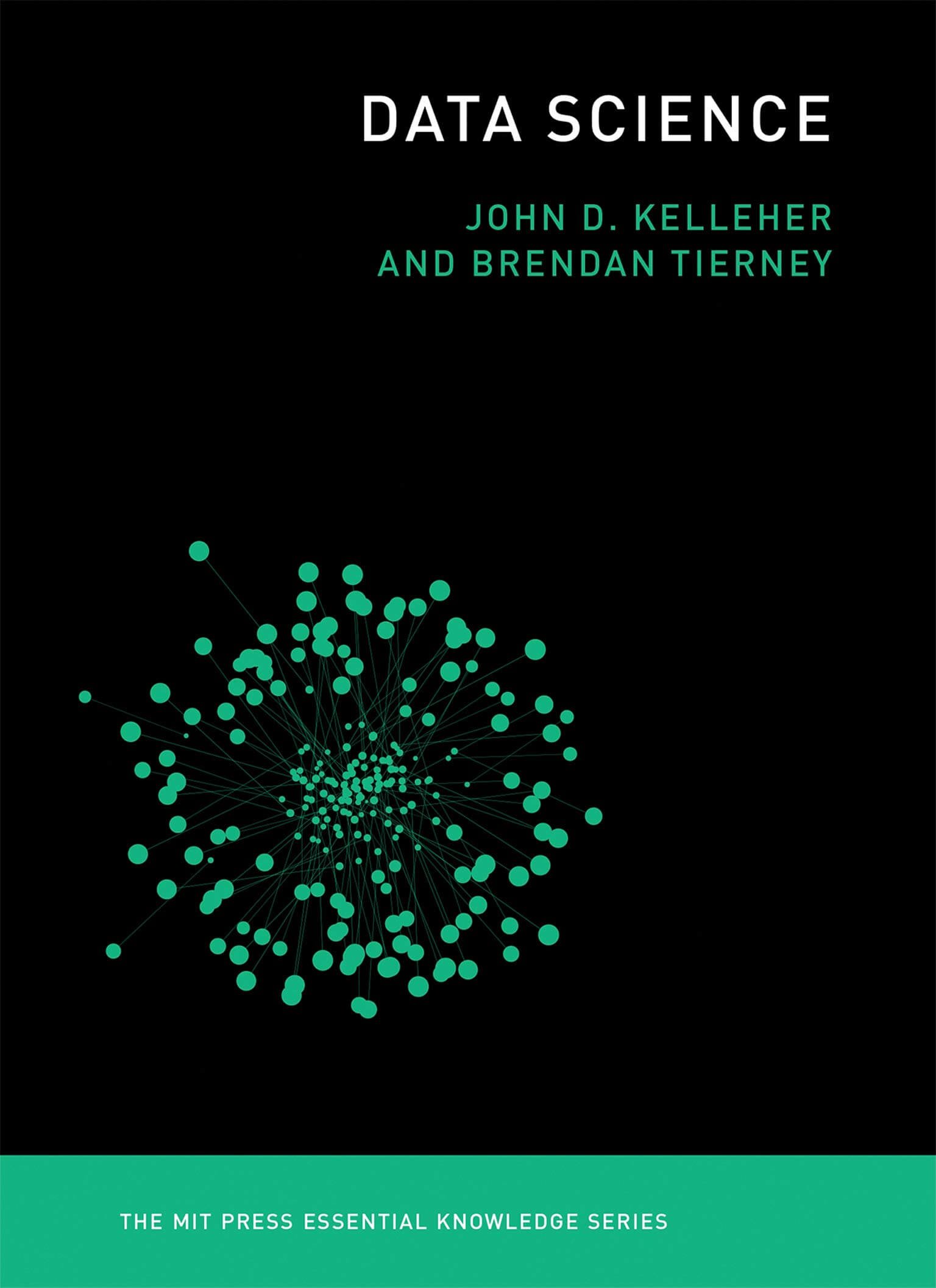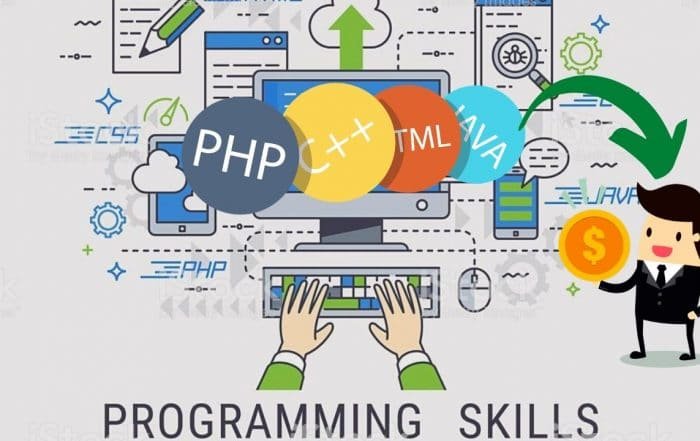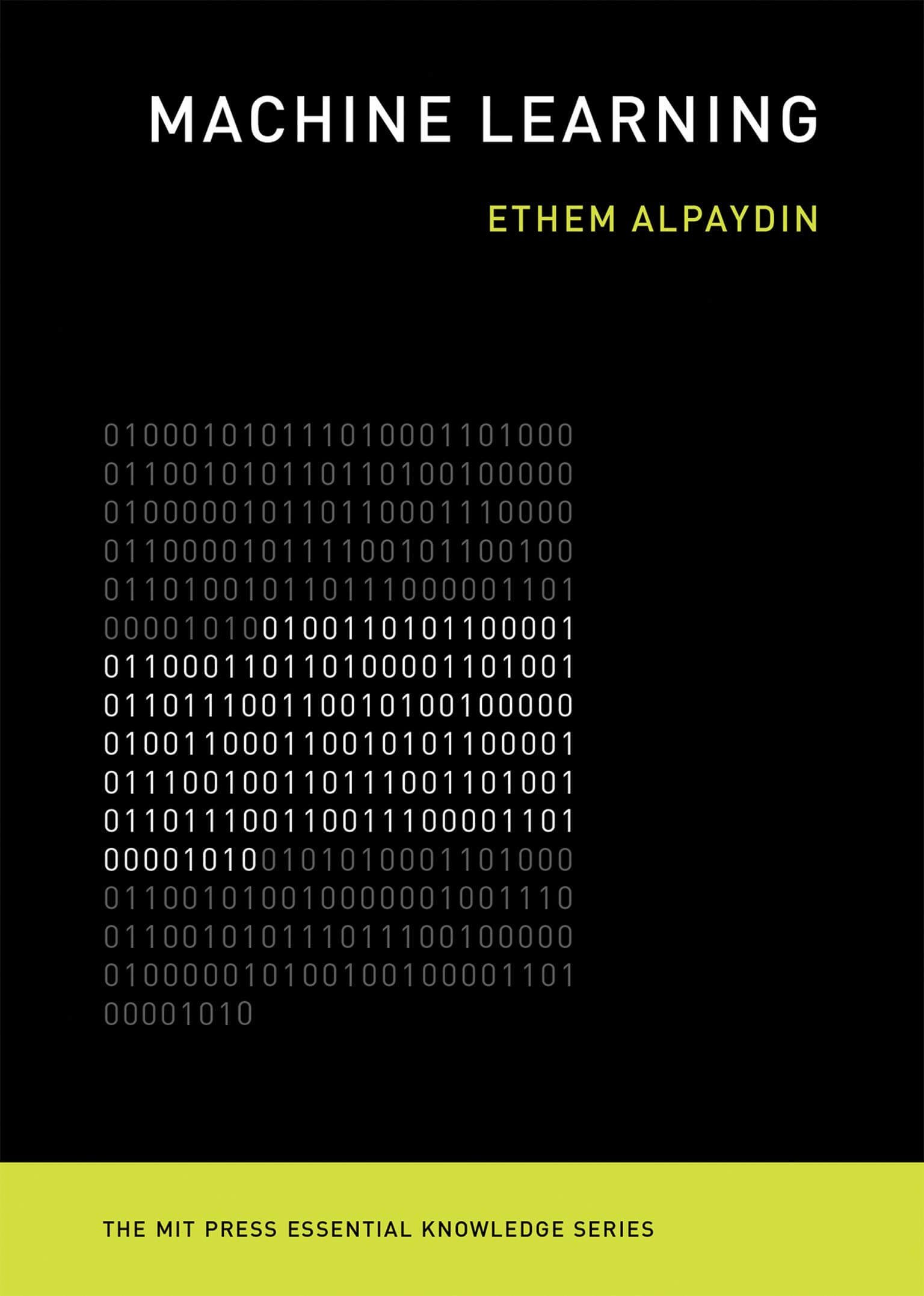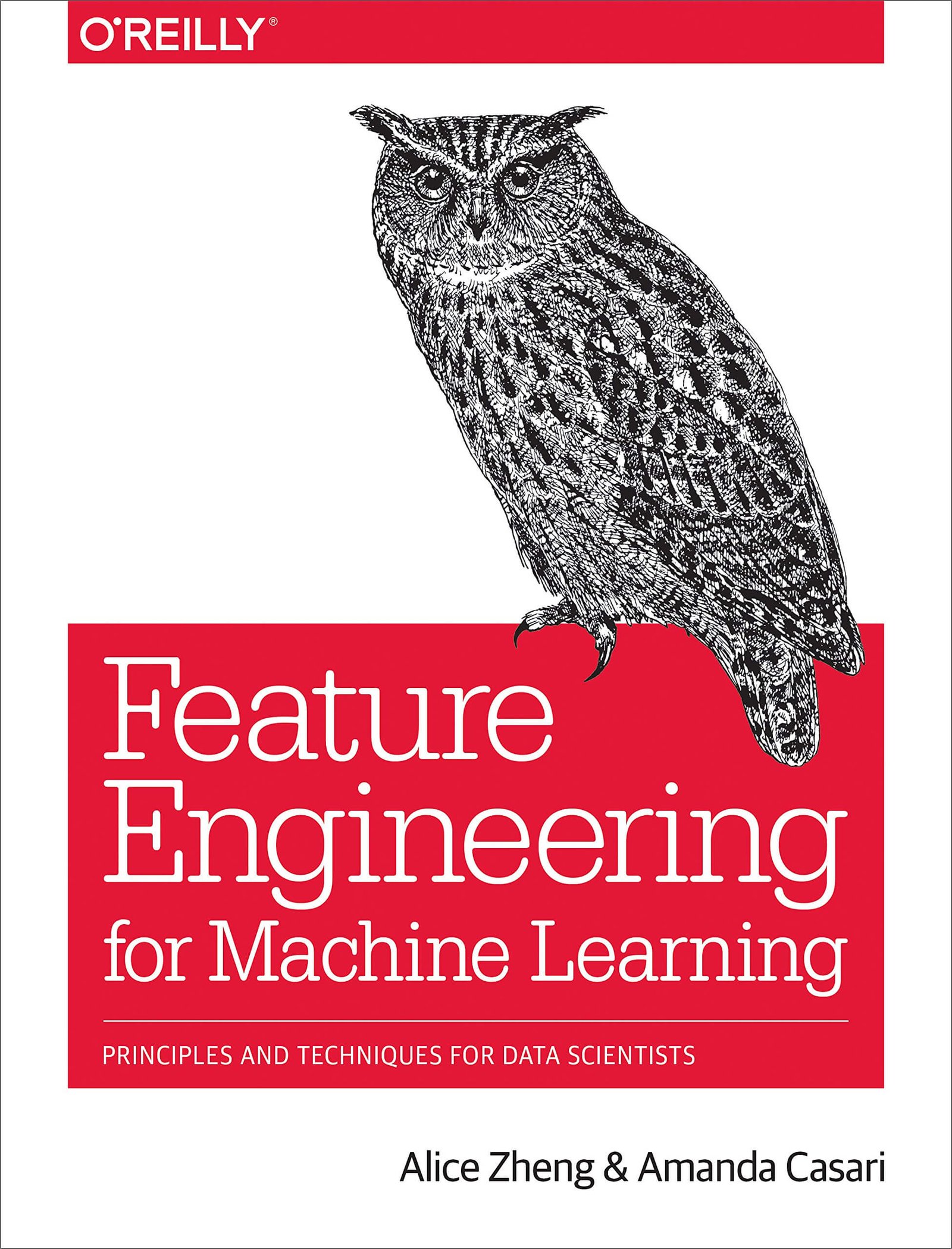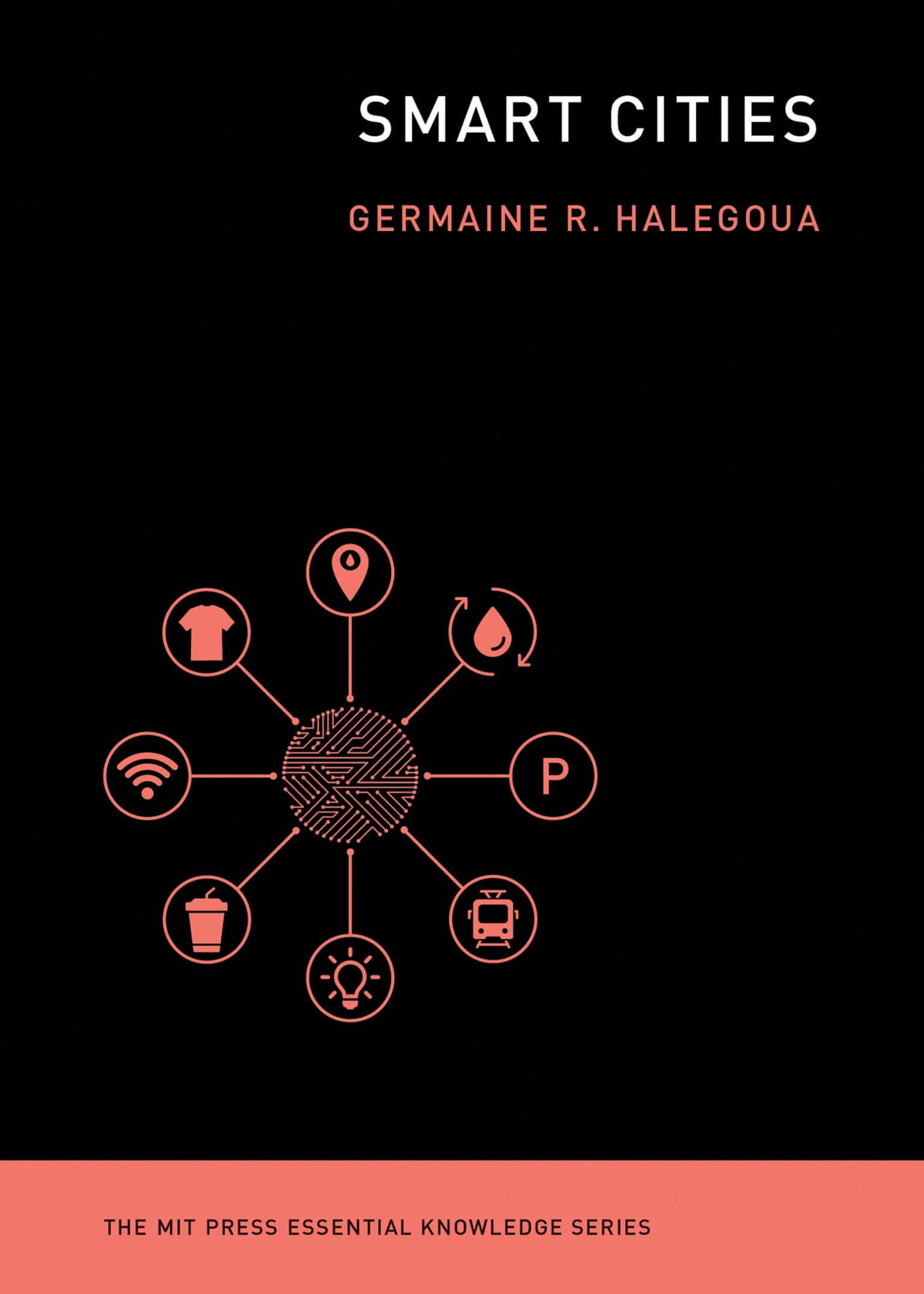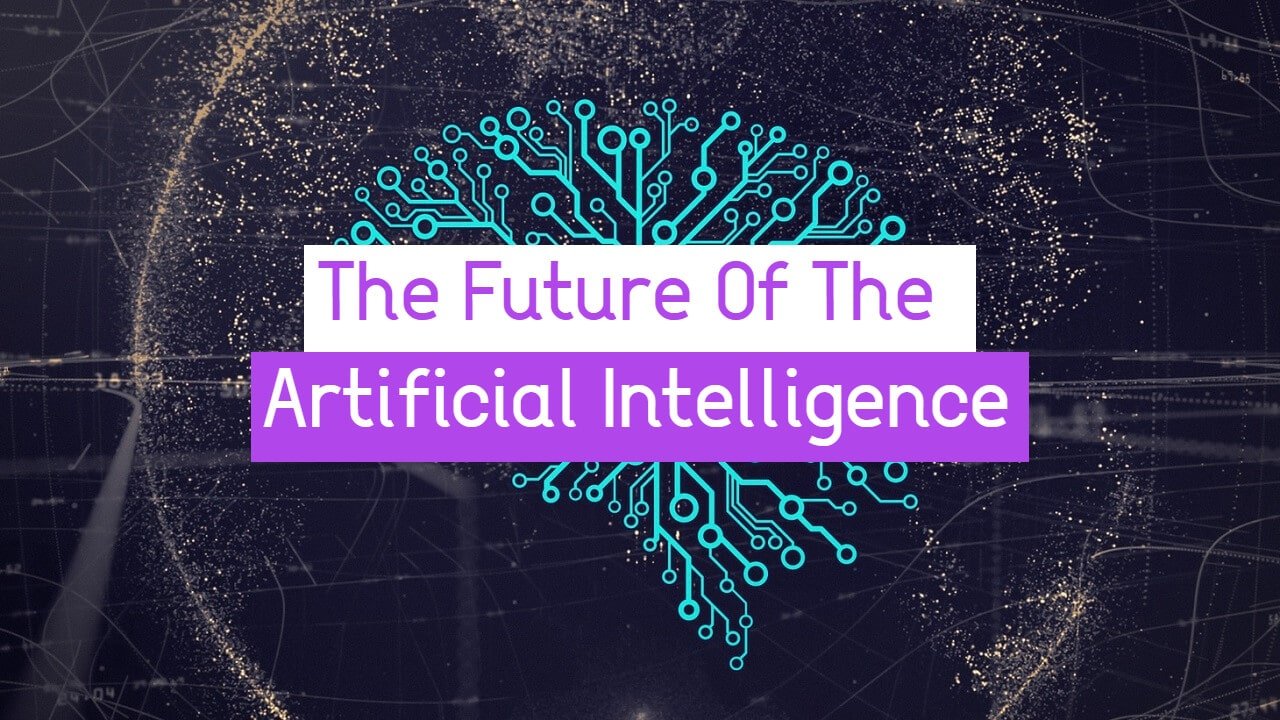Many of you liked our posts about the top 10 Machine Learning books that you should read before you start with it and the top 16 Books that made Elon Musk a genius. Both of those articles are full of books that you will find very useful, especially the first one, since it has books that are related only to Machine Learning.
The problem with those books is that some of them are too long, like over 700 pages, and some people like us hate reading. We prefer some shorter books that explain the concept and then we can we want to create practical projects and try it out.
Now, we are not suggesting that long books are not good, many of them have tons of useful examples and exercises, but there are a lot of others that are very repetitive and can make you feel like 70-80% of the time you are reading words that have no meaning for you.
In that spirit, in this article we are going to list you 15 short Artificial Intelligence books, that can help you understand the theme they are based on. By short AI books, we mean books under 300 pages.
But, if you learn better from videos than books, then we have the top 10 Artificial Intelligence YouTube channels in 2020 and also the top 10 best FREE Artificial Intelligence courses from Harvard, MIT, and Stanford.
The best short Artificial Intelligence books:
The order of the books is random, and it does not suggest that the first book is the best or vice versa. So, let’s check out these 15 short Artificial Intelligence books and choose which one will be the first to read right now.
1. Machine Learning: An Applied Mathematics Introduction
Description: A fully self-contained introduction to machine learning. All that the reader requires is an understanding of the basics of matrix algebra and calculus. Machine Learning: An Applied Mathematics Introduction covers the essential mathematics behind all of the most important techniques.
The book has 242 pages.
2. The Hundred-Page Machine Learning Book
Description: This is a unique book in many aspects. It is the first successful attempt to write an easy to read the book on machine learning that isn’t afraid of using math. It’s also the first attempt to squeeze a wide range of machine learning topics in a systematic way and without loss in quality.
The book contains only those parts of the huge body of material on machine learning developed since the 1960s that have proven to have a significant practical value. A beginner in machine learning will find in this book just enough details to get a comfortable level of understanding of the field and start asking the right questions.
Practitioners with experience will use this book as a collection of pointers to the directions of further self-improvement.
The book also comes in handy when brainstorming at the beginning of a project, when you try to answer the question whether a given technical or business problem is “machine-learnable” and, if yes, which techniques you should try to solve it.
The book comes with a wiki which contains pages that extend some book chapters with additional information: Q&A, code snippets, further reading, tools, and other relevant resources. Thanks to the continuously updated wiki this book like a good wine keeps getting better after you buy it.
The book has 160 pages.
3. Deep Learning (The MIT Press Essential Knowledge series)
Description: An accessible introduction to artificial intelligence technology that enables computer vision, speech recognition, machine translation, and driverless cars.
Deep learning is an artificial intelligence technology that enables computer vision, speech recognition in mobile phones, machine translation, AI games, driverless cars, and other applications. When we use consumer products from Google, Microsoft, Facebook, Apple, or Baidu, we are often interacting with a deep learning system.
In this volume in the MIT Press Essential Knowledge series, computer scientist John Kelleher offers an accessible and concise but comprehensive introduction to the fundamental technology at the heart of the artificial intelligence revolution.
The book has 296 pages.
4. Machine Learning For Absolute Beginners: A Plain English Introduction (Machine Learning From Scratch)

Machine Learning For Absolute Beginners: A Plain English Introduction (Machine Learning From Scratch)
Description: Machine Learning for Absolute Beginners Second Edition has been written and designed for absolute beginners. This means plain-English explanations and no coding experience required.
Where core algorithms are introduced, clear explanations and visual examples are added to make it easy and engaging to follow along at home.
The book has 155 pages.
5. Data Science (The MIT Press Essential Knowledge series)
Description: The goal of data science is to improve decision making through the analysis of data. Today data science determines the ads we see online, the books and movies that are recommended to us online, which emails are filtered into our spam folders, and even how much we pay for health insurance.
This volume in the MIT Press Essential Knowledge series offers a concise introduction to the emerging field of data science, explaining its evolution, current uses, data infrastructure issues, and ethical challenges.
It has never been easier for organizations to gather, store, and process data. The use of data science is driven by the rise of big data and social media, the development of high-performance computing, and the emergence of such powerful methods for data analysis and modeling as deep learning.
Data science encompasses a set of principles, problem definitions, algorithms, and processes for extracting non-obvious and useful patterns from large datasets. It is closely related to the fields of data mining and machine learning, but broader in scope.
This book offers a brief history of the field, introduces fundamental data concepts, and describes the stages in a data science project.
It considers data infrastructure and the challenges posed by integrating data from multiple sources, introduces the basics of machine learning, and discusses how to link machine learning expertise with real-world problems.
The book also reviews ethical and legal issues, developments in data regulation, and computational approaches to preserving privacy. Finally, it considers the future impact of data science and offers principles for success in data science projects.
The book has 280 pages.
6. Programming Computer Vision with Python: Tools And Algorithms For Analyzing Images
Description: If you want a basic understanding of computer vision’s underlying theory and algorithms, this hands-on introduction is the ideal place to start.
You’ll learn techniques for object recognition, 3D reconstruction, stereo imaging, augmented reality, and other computer vision applications as you follow clear examples written in Python.
Programming Computer Vision with Python explains computer vision in broad terms that won’t bog you down in theory. You get complete code samples with explanations on how to reproduce and build upon each example, along with exercises to help you apply what you’ve learned.
This book is ideal for students, researchers, and enthusiasts with basic programming and standard mathematical skills.
The book has 262 pages.
7. Natural Language Processing with PyTorch: Build Intelligent Language Applications Using Deep Learning

Natural Language Processing with PyTorch: Build Intelligent Language Applications Using Deep Learning
Description: Natural Language Processing (NLP) provides boundless opportunities for solving problems in artificial intelligence, making products such as Amazon Alexa and Google Translate possible.
If you’re a developer or data scientist new to NLP and deep learning, this practical guide shows you how to apply these methods using PyTorch, a Python-based deep learning library.
The book has 256 pages.
8. Machine Learning: The New AI (The MIT Press Essential Knowledge series)
Description: A concise overview of machine learning—computer programs that learn from data—which underlies applications that include recommendation systems, face recognition, and driverless cars.
Today, machine learning underlies a range of applications we use every day, from product recommendations to voice recognition – as well as some we don’t yet use everyday, including driverless cars.
It is the basis of the new approach in computing where we do not write programs but collect data; the idea is to learn algorithms for the tasks automatically from data.
As computing devices grow more ubiquitous, a larger part of our lives and work is recorded digitally, and as “Big Data” has gotten bigger, the theory of machine learning – the foundation of efforts to process that data into knowledge – has also advanced.
In this book, machine learning expert Ethem Alpaydin offers a concise overview of the subject for the general reader, describing its evolution, explaining important learning algorithms, and presenting example applications.
The book has 224 pages.
9. Deep Learning from Scratch: Building with Python from First Principles
Description: With the resurgence of neural networks in the 2010s, deep learning has become essential for machine learning practitioners and even many software engineers.
This book provides a comprehensive introduction for data scientists and software engineers with a machine learning experience.
You’ll start with deep learning basics and move quickly to the details of important advanced architectures, implementing everything from scratch along the way.
Author Seth Weidman shows you how neural networks work using a first-principles approach. You’ll learn how to apply multilayer neural networks, convolutional neural networks, and recurrent neural networks from the ground up.
With a thorough understanding of how neural networks work mathematically, computationally, and conceptually, you’ll be set up for success on all future deep learning projects.
The book has 252 pages.
10. Building Machine Learning Powered Applications: Going from Idea to Product
Description: Learn the skills necessary to design, build, and deploy applications powered by machine learning (ML). Through the course of this hands-on book, you’ll build an example ML-driven application from initial idea to deployed product.
Data scientists, software engineers, and product managers – including experienced practitioners and novices alike – will learn the tools, best practices, and challenges involved in building a real-world ML application step by step.
Author Emmanuel Ameisen, an experienced data scientist who led an AI education program, demonstrates practical ML concepts using code snippets, illustrations, screenshots, and interviews with industry leaders.
Part I teaches you how to plan an ML application and measure success.
Part II explains how to build a working ML model.
Part III demonstrates ways to improve the model until it fulfills your original vision. Part IV covers deployment and monitoring strategies.
The book has 260 pages.
11. Programming PyTorch for Deep Learning: Creating and Deploying Deep Learning Applications
Description: Take the next steps toward mastering deep learning, the machine learning method that’s transforming the world around us by the second. In this practical book, you’ll get up to speed on key ideas using Facebook’s open-source PyTorch framework and gain the latest skills you need to create your very own neural networks.
The book has 220 pages.
12. Feature Engineering for Machine Learning: Principles and Techniques for Data Scientists
Description: Feature engineering is a crucial step in the machine-learning pipeline, yet this topic is rarely examined on its own. With this practical book, you’ll learn techniques for extracting and transforming features—the numeric representations of raw data—into formats for machine-learning models.
Each chapter guides you through a single data problem, such as how to represent text or image data. Together, these examples illustrate the main principles of feature engineering.
The book has 218 pages.
13. Smart Cities (The MIT Press Essential Knowledge series)
Description: Key concepts, definitions, examples, and historical contexts for understanding smart cities, along with discussions of both drawbacks and benefits of this approach to urban problems.
Over the past ten years, urban planners, technology companies, and governments have promoted smart cities with a somewhat utopian vision of urban life made knowable and manageable through data collection and analysis.
Emerging smart cities have become both crucibles and showrooms for the practical application of the Internet of Things, cloud computing, and the integration of big data into everyday life.
Are smart cities optimized, sustainable, digitally networked solutions to urban problems? Or are they neoliberal, corporate-controlled, undemocratic non-places? This volume in the MIT Press Essential Knowledge series offers a concise introduction to smart cities, presenting key concepts, definitions, examples, and historical contexts, along with discussions of both the drawbacks and the benefits of this approach to urban life.
After reviewing current terminology and justifications employed by technology designers, journalists, and researchers, the book describes three models for smart city development – smart-from-the-start cities, retrofitted cities, and social cities – and offers examples of each.
It covers technologies and methods, including sensors, public wi-fi, big data, and smartphone apps, and discusses how developers conceive of interactions among the built environment, technological and urban infrastructures, citizens, and citizen engagement.
Throughout, the author – who has studied smart cities around the world – argues that smart city developers should work more closely with local communities, recognizing their preexisting relationship to urban placesx and realizing the limits of technological fixes. Smartness is a means to an end: improving the quality of urban life.
The book has 248 pages.
14. AI Superpowers: China, Silicon Valley, and the New World Order
Description: In AI Superpowers, Kai-fu Lee argues powerfully that because of these unprecedented developments in AI, dramatic changes will be happening much sooner than many of us expected. Indeed, as the US-Sino AI competition begins to heat up, Lee urges the US and China to both accept and embrace the great responsibilities that come with significant technological power.
Most experts already say that AI will have a devastating impact on blue-collar jobs. But Lee predicts that Chinese and American AI will have a strong impact on white-collar jobs as well. Is universal basic income the solution? In Lee’s opinion, probably not.
But he provides a clear description of which jobs will be affected and how soon, which jobs can be enhanced with AI, and most importantly, how we can provide solutions to some of the most profound changes in human history that are coming soon.
The book has 272 pages.
15. Applied Artificial Intelligence: A Handbook For Business Leaders
Description: Applied Artificial Intelligence is a practical guide for business leaders who are passionate about leveraging machine intelligence to enhance the productivity of their organizations and the quality of life in their communities. If you want to drive innovation by combining data, technology, design, and people to solve real problems at an enterprise scale, this is your playbook.
This book does not overload you with details on debugging TensorFlow code nor bore you with generalizations about the future of humanity.
Instead, we teach you how to lead successful AI initiatives by prioritizing the right opportunities, building a diverse team of experts, conducting strategic experiments, and consciously designing your solutions to benefit both your organization and society as a whole.
This book is focused on helping you drive concrete business decisions through applications of artificial intelligence and machine learning.
The book has 246 pages.
Conclusion:
So, here is our choice of the top 15 powerful and short Artificial Intelligence books. Each of these books has tons of great material (some of them theoretical some of them practical with real-world examples) that are very challenging and non-repetitive.
If you don’t like books with over 300 pages, then theses 15 choices are the best for you. A short book will allow you to finish it very quickly and at the same time, you can apply your knowledge to practical work.
If you however want to dive deep into long books with hundreds and hundreds of pages that you can find those in our article about top 10 Machine Learning books that you should read before you start with it.
If you don’t want AI books too much and you want to experience the academic studies, or you are a more visual learner and you want to learn from videos, than you can check out our articles about:
- FREE Computer Science Curriculum From The Best Universities and Companies In The World
- How To Become a Certified Data Scientist at Harvard University for FREE
- How to Gain a Computer Science Education from MIT University for FREE
- Top 10 Best FREE Artificial Intelligence Courses from Harvard, MIT, and Stanford
- Top 10 Best Artificial Intelligence YouTube Channels in 2020
Like with every post we do, we encourage you to continue learning, trying, and creating.

